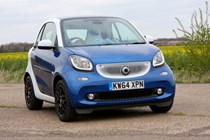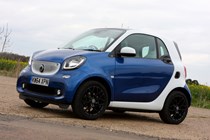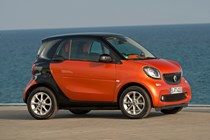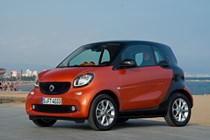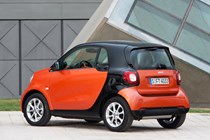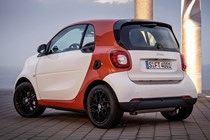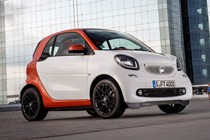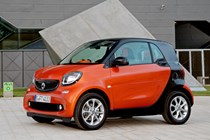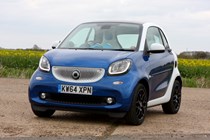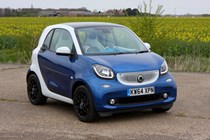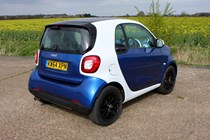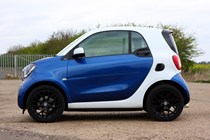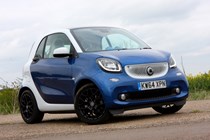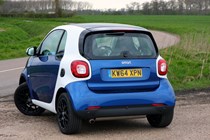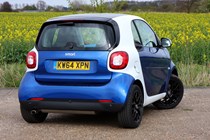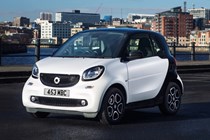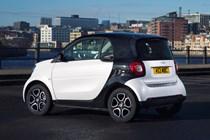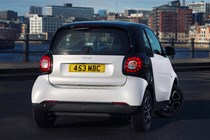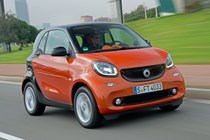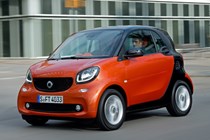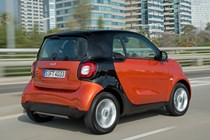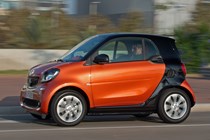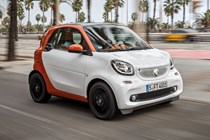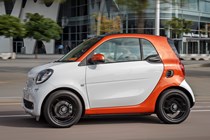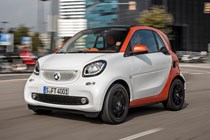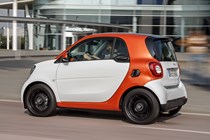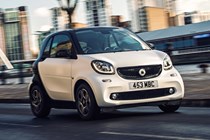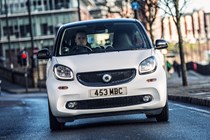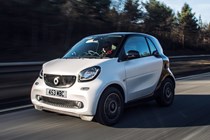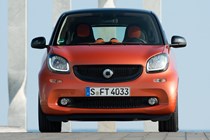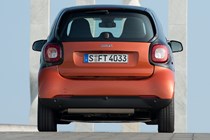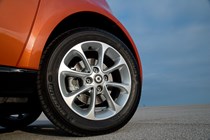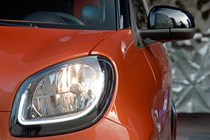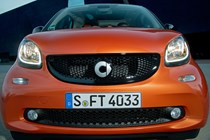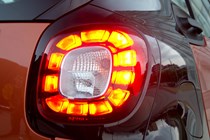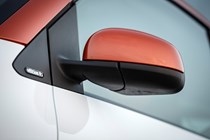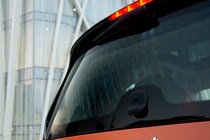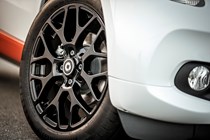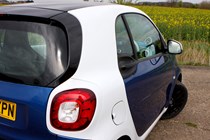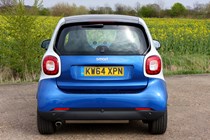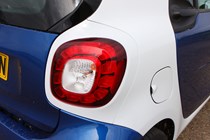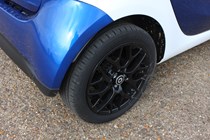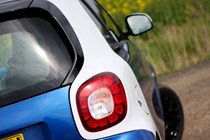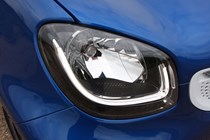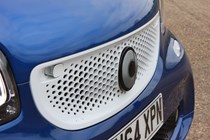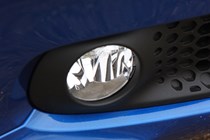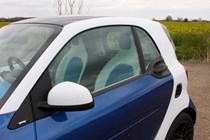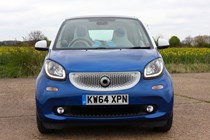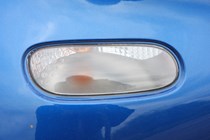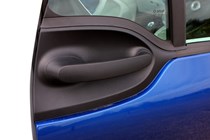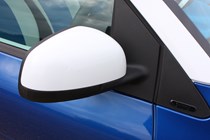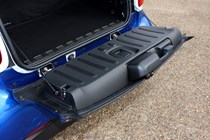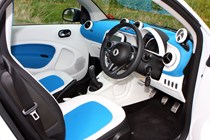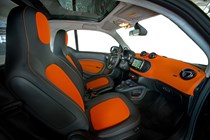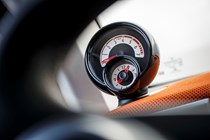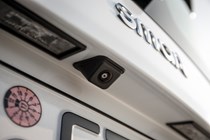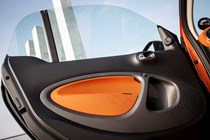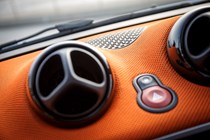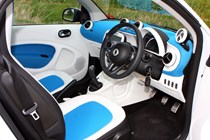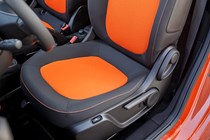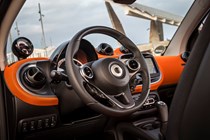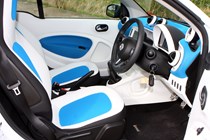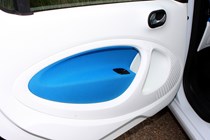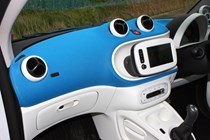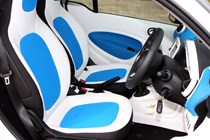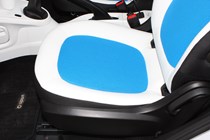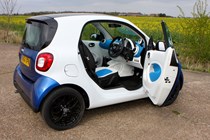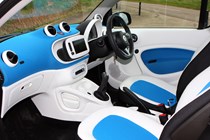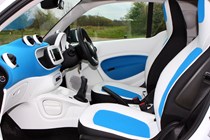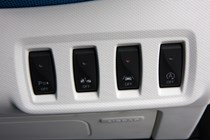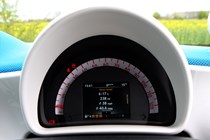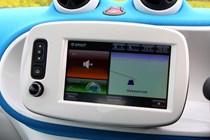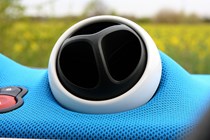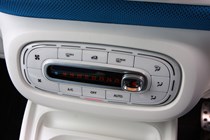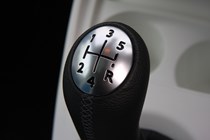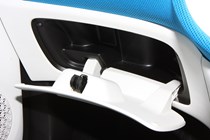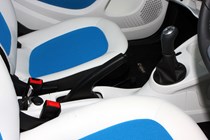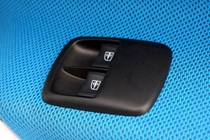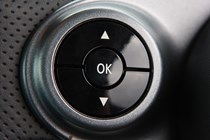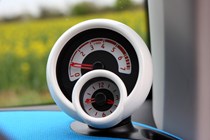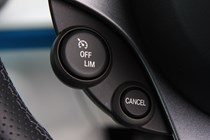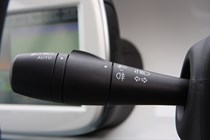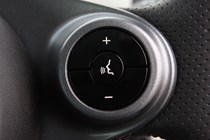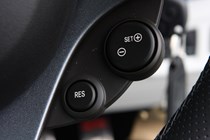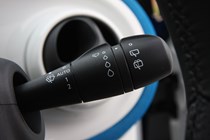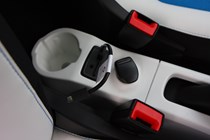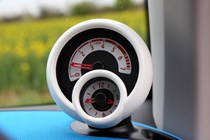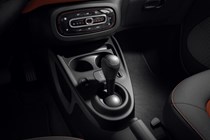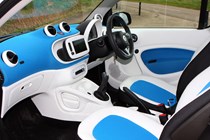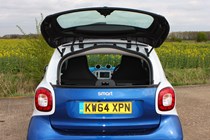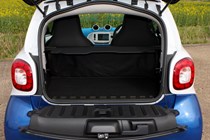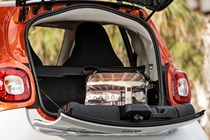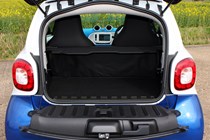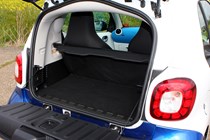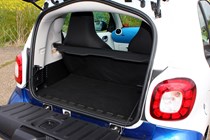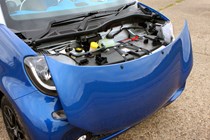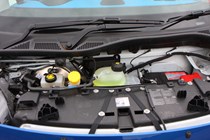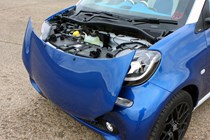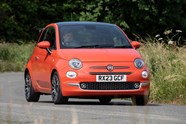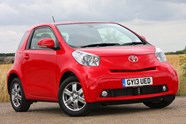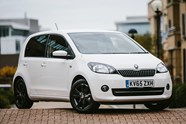
Smart Fortwo Coupe review
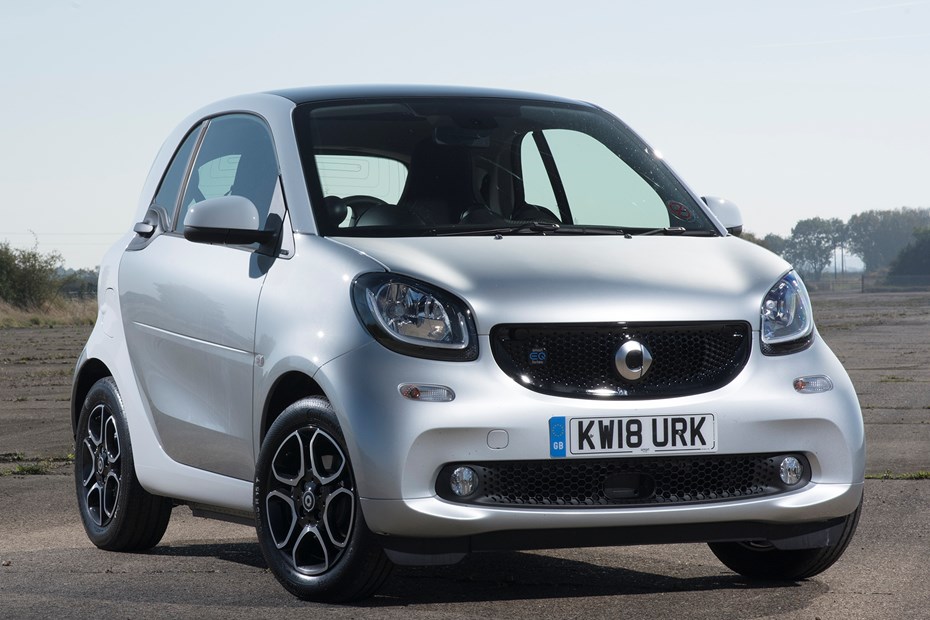
At a glance
| Price new | £9,875 - £20,065 |
|---|---|
| Used prices | £2,685 - £13,447 |
| Road tax cost | £0 - £190 |
| Insurance group | 2 - 12 |
Get an insurance quote with

|
|
| Fuel economy | 44.1 - 49.6 mpg |
| Range | 416 - 524 miles |
| Miles per pound | 6.5 - 7.3 |
| View full specs for a specific version | |
Available fuel types
Petrol
Pros & cons
- Efficient engines
- Fun handling
- Surprisingly practical
- Larger ForFour better value
- Rivals cheaper
- Compromised outside of town and city environments
Smart Fortwo Coupe (15-19) rivals
Overview
Full price and spec details of 2020 Smart EQ Fortwo and Fourfour here
The Smart Fortwo was a genuine pioneer in the city car class – stripping transportation to its bare essentials in terms of size but fitting in all the creature comforts one expects from a modern car. The end result was small enough to park nose-on to the kerb and seat only two people, but featured big-car equipment.
Unfortunately, it also commanded a big-car price tag and demanded more compromise than most were willing to put up with. Commuters voted with their feet, and decided to opt either for more conventional, four-seat rivals or simply go the whole hog of miniaturising and get a motorbike.
A small but loyal following kept buying Smart cars, though, and their support has kept the brand afloat long to build this third-generation model. It’s been around since 2015 in one form or another and is soon to be superseded – in a way, by itself. That’s because Smart’s due to transition to an all-electric brand in 2020, and the Fortwo and its sister model the larger Forfour will be updated and made available exclusively with all-electric powertrains.
For now though, on top of the existing electric model there are also petrol engines plus a choice of gearboxes and myriad trim levels to consider before making a Smart Fortwo purchase. There’s also a convertible model.
How practical is it?
Considering the Fortwo’s dinky dimensions and two-seat layout, there’s actually a surprising amount of storage space on offer. For a start, not trying to squeeze in an extra row of seats means that the two occupants have plenty of leg, head and elbow room to stretch out in.
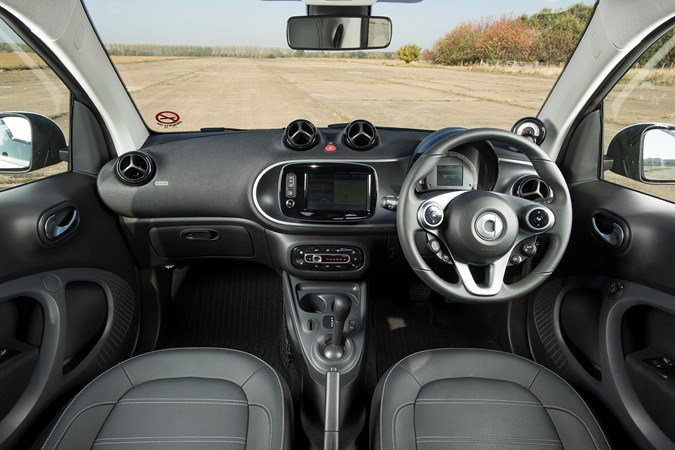
The boot’s also a useful size for two people, with a split tailgate to access it. If you’re on your own and you need to carry larger items, the front seat folds flat for a bit of additional flexibility.
Whether the Smart Fortwo is a practical proposition, then, depends entirely on your planned usage of it. Think you’ll ever need a backseat – even occasionally? Not the car for you.
Petrol or electric powertrains
The Fortwo was co-developed with the Renault Twingo, which means that its engines sit behind the passenger compartment, above the rear axle.
There’s a choice of two petrol units. The first is a 1.0-litre three-cylinder with 70hp, capable of 0-62mph in a fairly glacial 14.4 seconds. The 90hp 0.9-litre has a turbocharger and completes the same sprint in 10.4 seconds. Previously available was a performance-oriented Brabus model, but don’t get too excited – it still only developed 110hp.
Engines are paired to a five-speed manual or a twin-clutch automatic – the latter being a vast improvement on previous Smart gearboxes.
Also available is an all-electric model. Badged as either ED (electric drive) or later EQ, as part of Mercedes’ rebranding efforts for the company, it uses an 80hp electric motor capable of 0-62mph in 11.5 seconds. With a claimed range of 100 miles, it’s not the most practical of EVs around, but it is one of the cheapest.
The engine’s positioning results in decent refinement regardless of which of the two petrol engines you choose. Naturally, the electric powertrain is nearly silent.
Ideal for nipping around town
The Smart’s piece de resistance is its tiny turning circle – smaller than that of a London black cab. Impromptu U-turns and tight parking spots are an absolute doddle, then, and the light steering makes manoeuvres like that a breeze.
Greater suspension travel and a new chassis means it rides far better than previous models did, too, while the new gearboxes are more responsive. This really could be the ultimate city car.
This does of course mean it’s not as suited to longer journeys as something larger would be, but it’s more than bearable – and the comfortable interior and decent soundproofing mean motorway trips certainly aren’t out of the question.
Rivals
The Fortwo’s somewhat of a unique proposition on the market and as such doesn’t truly have any direct rivals. Cheap city cars such as the Volkswagen Up and Hyundai i10 aren’t as quirky or plush, but are better value and more practical. The Fiat 500 and Mini are similarly fashion-led, too. It’s arguable that if you’re truly just after the smallest vehicle you can possibly buy, the Smart rivals the likes of the Renault Twizy or even motorbikes.



